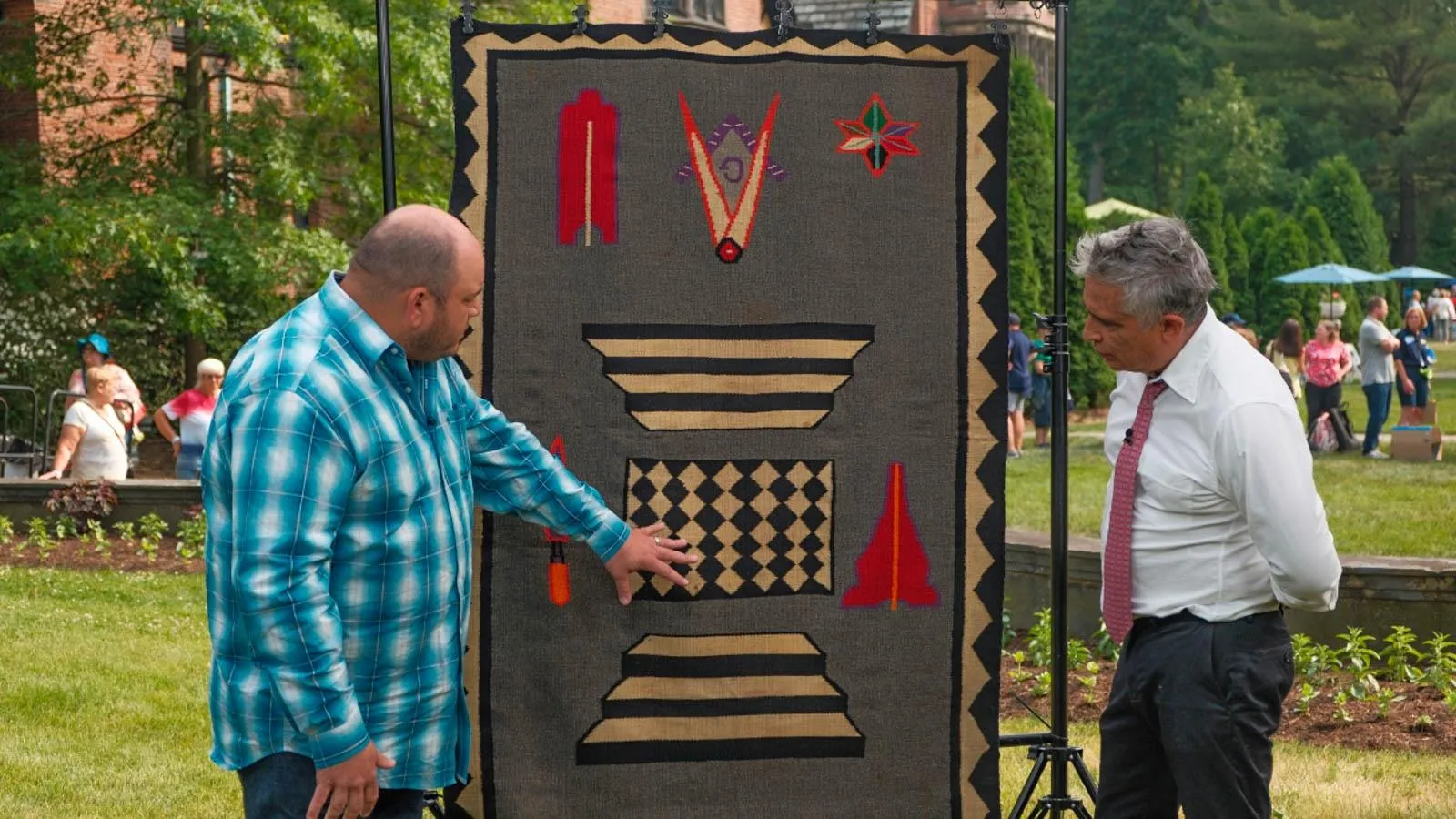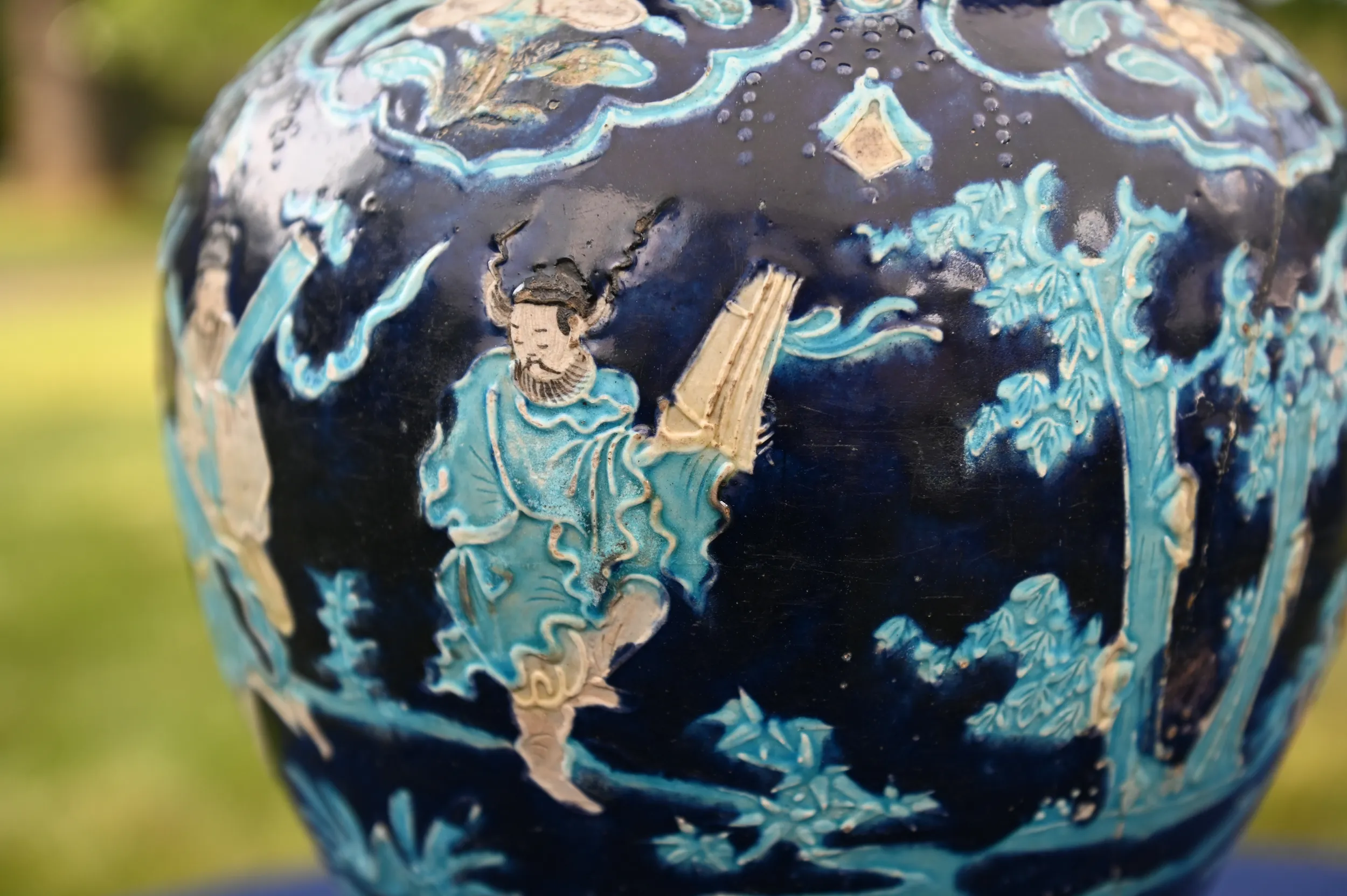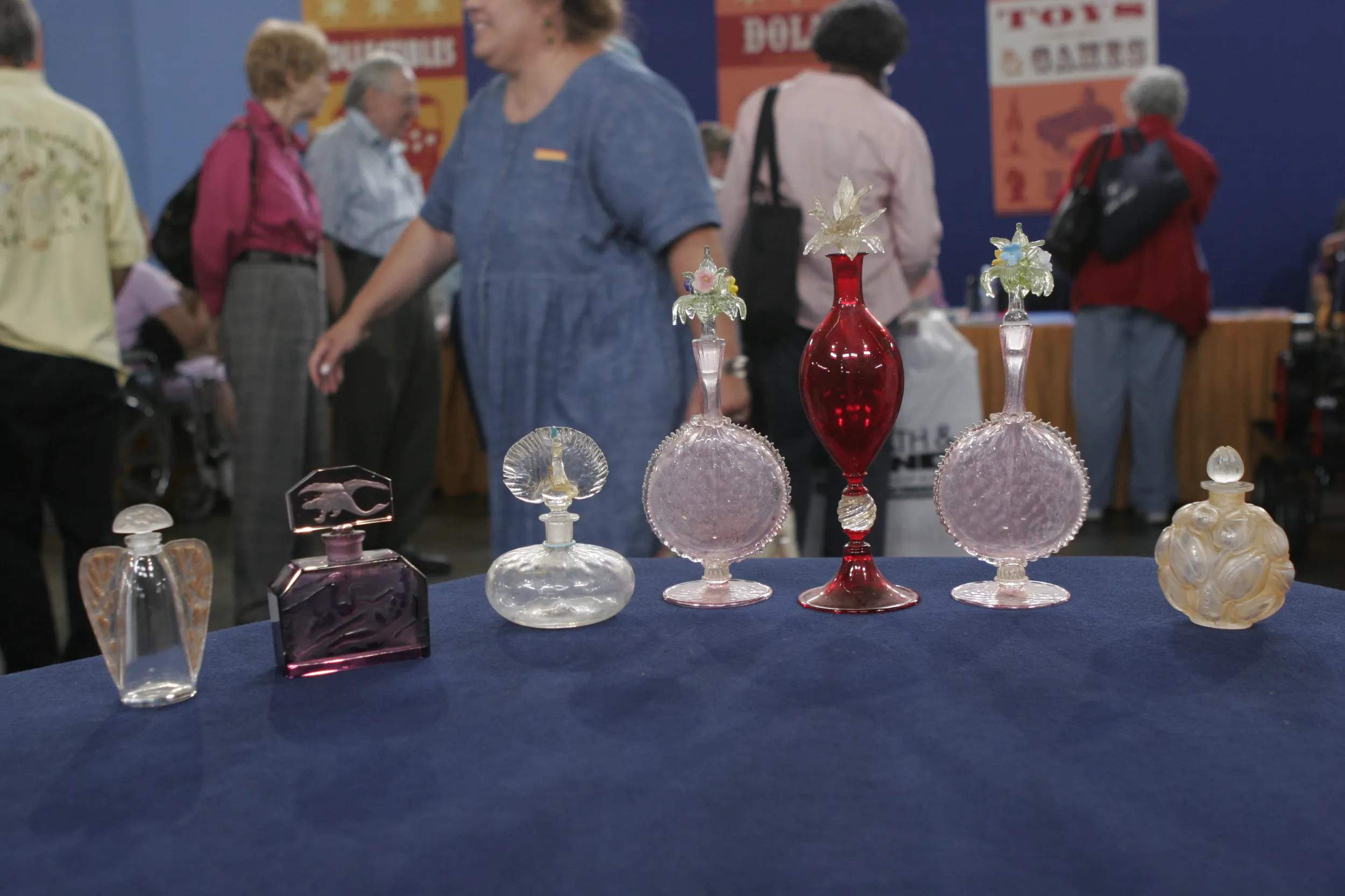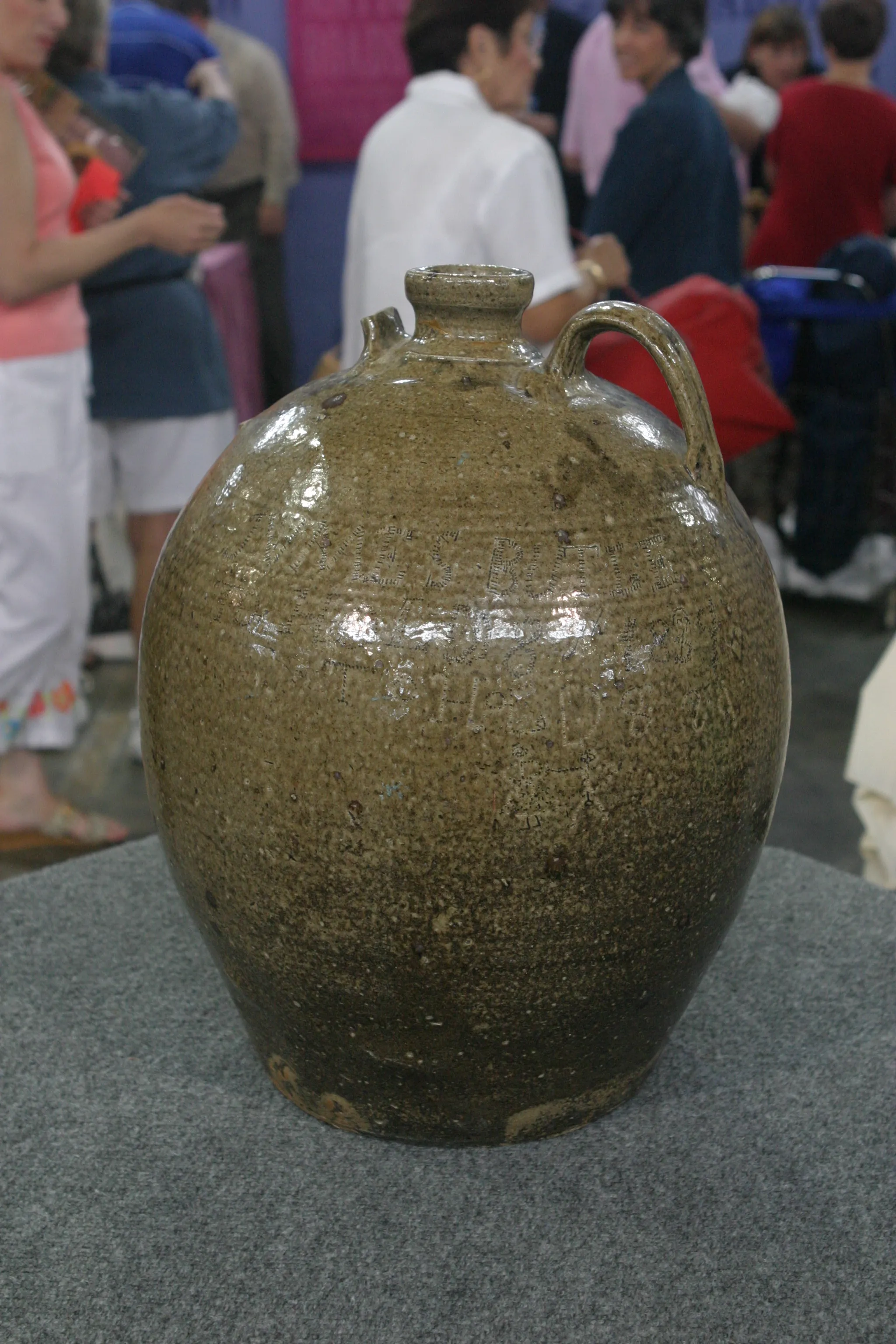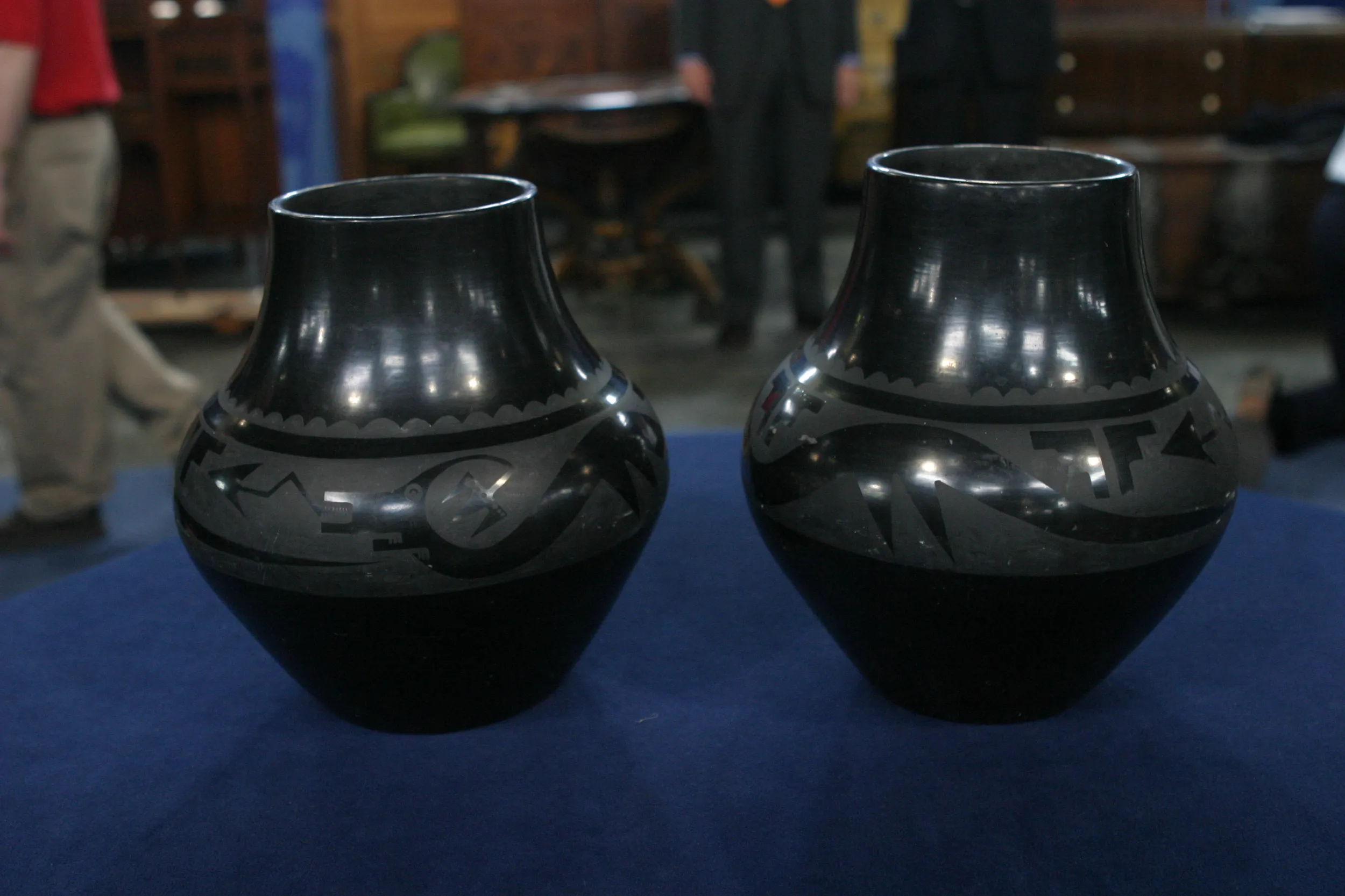GUEST: Well, my mother was downsizing, and this was one of the items that was in her closet. And she said, "Would you like this?" And I said, yeah, it looks interesting, and it might look good in my office. Prior to that, her mother had it. I thought it looked so beautiful, it shouldn't sit in a closet anymore. So, I decided to take it out and give it a whole new life.
APPRAISER: Do you know where or when your grandmother got it?
GUEST: I actually don't know.
APPRAISER: The colors are striking. What makes part of that color pop, this dark blue...
GUEST: Yeah.
APPRAISER: ...with the light blue contrast, is the fact that for so much of this decoration, it's in relief. And that relief is done by applying a slip, which is just kind of a thin line of clay, and it raises up certain sections. And that actually refers to the name of what this is called. This is... the technique is called fahua,
GUEST: Hmm.
APPRAISER: which means kind of designs within borders.
GUEST: Okay.
APPRAISER: It was done this way because of inspiration from a technique of working with enamels on metal called cloisonné. And the overall shape, this rounded shape, is called a baluster. And one of the features that you'll notice are the figures. They're all dressed in long, flowing robes.
GUEST: Mm-hmm.
APPRAISER: What country do you think is associated with that kind of design?
GUEST: China, maybe?
APPRAISER: Yeah, absolutely right.
GUEST: Okay.
APPRAISER: And another little clue up here is you see these little beads hanging down?
GUEST: Mm-hmm.
APPRAISER: These are kind of Buddhistic emblems.
GUEST: Okay.
APPRAISER: It's a narrative. We have figures in a line.
GUEST: Mm-hmm.
APPRAISER: You'll notice that there's detailed painted designs on the faces. Those are actually later designs.
GUEST: Hmm.
APPRAISER: They were probably worn off, and somebody in the 19th century or 20th century thought they would add some details to it.
GUEST: Interesting.
APPRAISER: The figures, I believe, are representative of immortals who are human-form figures that embody special attributes.
GUEST: Okay.
APPRAISER: But they're usually eight; there's nine here. So there's more to the story than I know. This type of ceramic was made in the 16th century...
GUEST: Hmm.
APPRAISER: ...in the Ming dynasty, which is 1368 to 1644. This was made roughly around 1500.
GUEST: Ooh, jeez. Okay.
APPRAISER: This would have been made for someone who was a prominent individual, somebody of wealth and power. There's a little bit of damage that's taken place. Right here there's a crack.
GUEST: Mm-hmm.
APPRAISER: And then it goes across the midsection. Where it's going across the midsection is what's called the lute line, because this was probably made in a couple of sections and then joined together. The wooden base and top were likely made around 1900 to 1915.
GUEST: Mm.
APPRAISER: What do you think the value would be for insurance?
GUEST: Hmm. Well, it being so old, I… (chuckles) I don't even know anymore.
APPRAISER: Yeah?
GUEST: Um, I would say… maybe $500 to $1,000, maybe?
APPRAISER: Well, I, I, I think probably closer, for insurance purposes...
GUEST: Mm-hmm?
APPRAISER: …$20,000.
GUEST: Oh. Ah, yeah, that's, that's a little more than what I thought. Wow. Um, yeah, that's amazing.

